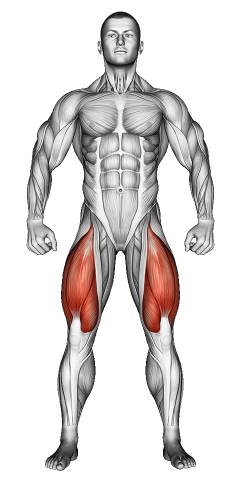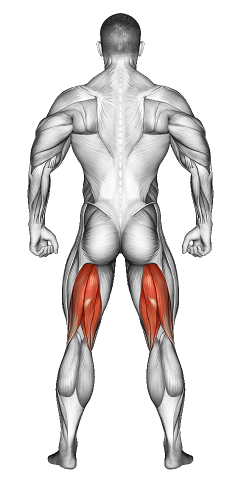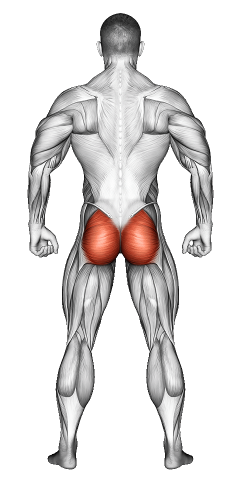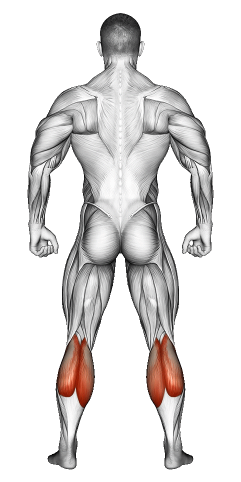Bodyweight Squat: Video Tutorial & Exercise Guide

Written By: Claude Michael
Updated: Oct 13, 2024
| Workout | Bodyweight Squat |
| Primary Muscle Group | Quads |
| Secondary Muscle Group | Hamstrings, Glutes Calves |
| Equipment Required | Bodyweight |
| Force Type | Push |
| Mechanics | Compound |
| Exercise Type | Strength |
| Difficulty | Beginner |
Bodyweight Squat: Video Tutorial & Exercise Guide
- 1.Bodyweight Squat: Muscle Groups
- -1.1Primary Muscle Group
- -1.2Secondary Muscle Group
- 2.Bodyweight Squat: Step-by-Step Guide
- 3.Bodyweight Squat: Overview
- 4.Bodyweight Squat: Benefits
- 5.Bodyweight Squat: Pro Tips & Advanced Techniques
- 6.Bodyweight Squat: Progression Plan
- 7.Bodyweight Squat: Frequently Asked Questions (FAQs)
Secondary Muscles Group
Bodyweight Squat: Step-by-Step Guide
- Step 1: Stand with your feet shoulder-width apart and your toes slightly pointed outward. Keep your chest up, shoulders back, and engage your core for stability.
- Step 2: Begin the squat by pushing your hips back as if you’re sitting down in a chair. Bend your knees and lower your body until your thighs are parallel to the ground.
- Step 3: Keep your weight in your heels and make sure your knees track over your toes without collapsing inward.
- Step 4: Pause briefly at the bottom, then press through your heels to stand back up, straightening your legs and returning to the starting position.
- Step 5: Repeat for the desired number of reps, maintaining control and proper form throughout the movement.
Bodyweight Squat: Overview
The Bodyweight Squat is a fundamental lower-body exercise that targets the quadriceps, hamstrings, glutes, and calves. This movement helps build strength, endurance, and flexibility in the legs while also engaging the core for stability.
As a functional movement, squats mimic everyday actions like sitting and standing, making them essential for overall fitness and mobility. Since no equipment is required, Bodyweight Squats are ideal for any fitness level and can be performed anywhere.
Bodyweight Squats: Benefits
Bodyweight Squats primarily target the quadriceps, hamstrings, and glutes, building strength and endurance in the lower body. This movement also engages the core muscles, improving stability and balance.
Squats help improve mobility in the hips, knees, and ankles, promoting better posture and reducing the risk of injury. They are a great way to increase lower body flexibility and range of motion, which is essential for functional movement and athletic performance.
Additionally, Bodyweight Squats are a calorie-burning exercise that can be incorporated into high-repetition circuits or bodyweight routines for conditioning and toning.
Bodyweight Squats: Pro Tips & Advanced Techniques
Focus on keeping your chest up and your core engaged to maintain proper posture throughout the movement. Avoid letting your knees cave inward—push them out slightly to ensure proper alignment. For an added challenge, try holding a pause at the bottom of the squat or slowing down the eccentric (lowering) phase to increase time under tension. Ready to build stronger legs? Let’s squat!
Bodyweight Squats: Progression Plan
Beginner
Intermediate
Advanced
Bodyweight Squat: Frequently Asked Questions (FAQs)
What muscles do Bodyweight Squats target?
+This exercise primarily targets the quadriceps, hamstrings, and glutes, while also engaging the calves and core for stability.
Are Bodyweight Squats suitable for beginners?
+Yes, this exercise is ideal for beginners. It allows you to focus on mastering proper form without the need for weights. Start with a lower number of reps and build up as your strength and endurance improve.
How can I make Bodyweight Squats more challenging?
+To increase the difficulty, try adding weight with a dumbbell or kettlebell, or perform jump squats for added intensity. You can also slow down the movement or hold a pause at the bottom to increase muscle engagement.
How often should I include Bodyweight Squats in my routine?
+Include this exercise 2-3 times per week as part of your lower body or full-body workout. It pairs well with other leg exercises like lunges and step-ups for a complete leg workout.
What common mistakes should I avoid?
+Avoid letting your knees cave inward or allowing your chest to drop forward. Focus on keeping your chest up, your core engaged, and your knees tracking over your toes throughout the movement.
Share
Don’t Wish for It, Work for It – Join the FlexXP Newsletter Today!
Thank you for signing up for the FlexXP Newsletter!
This site is protected and the Google Privacy Policy and Terms of Service apply.



